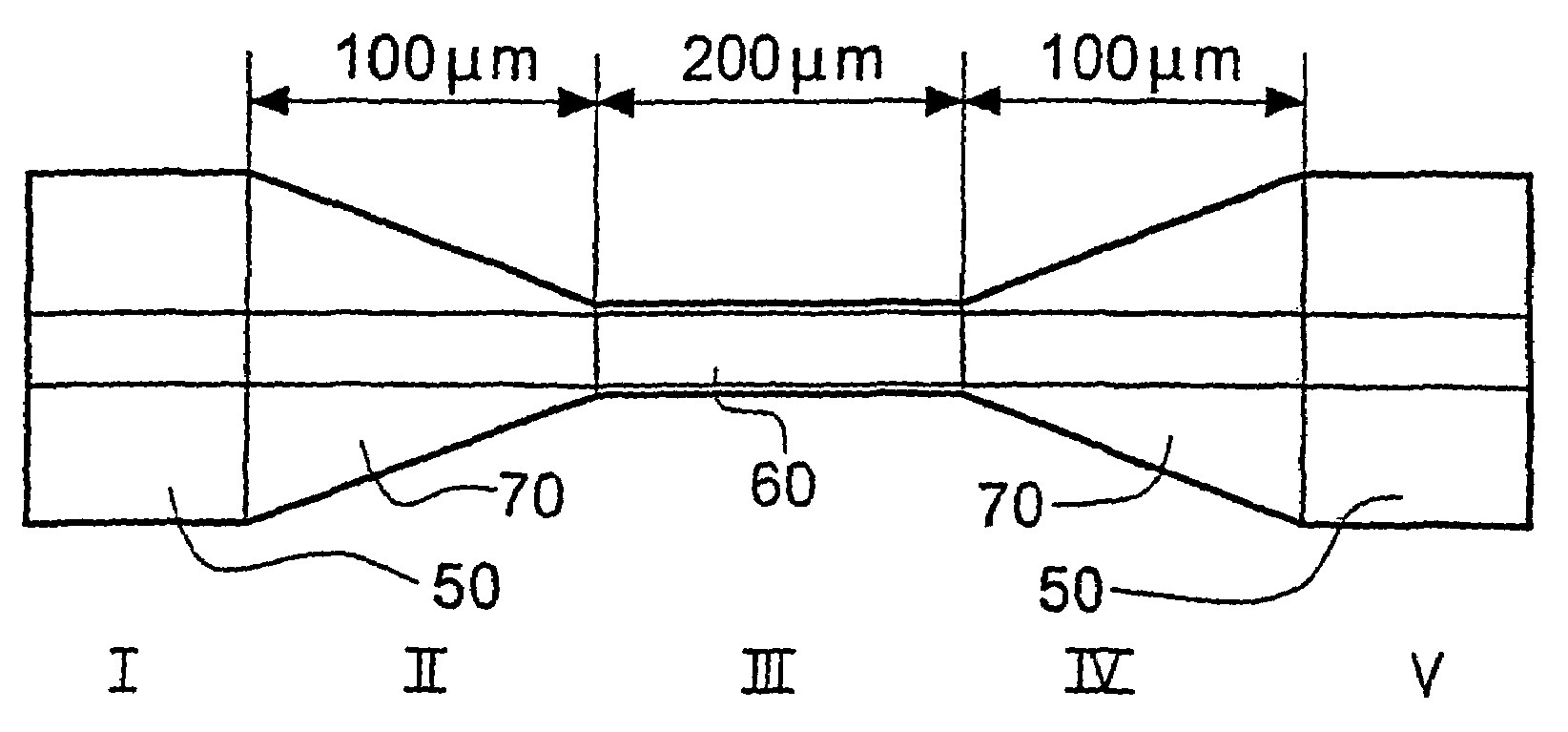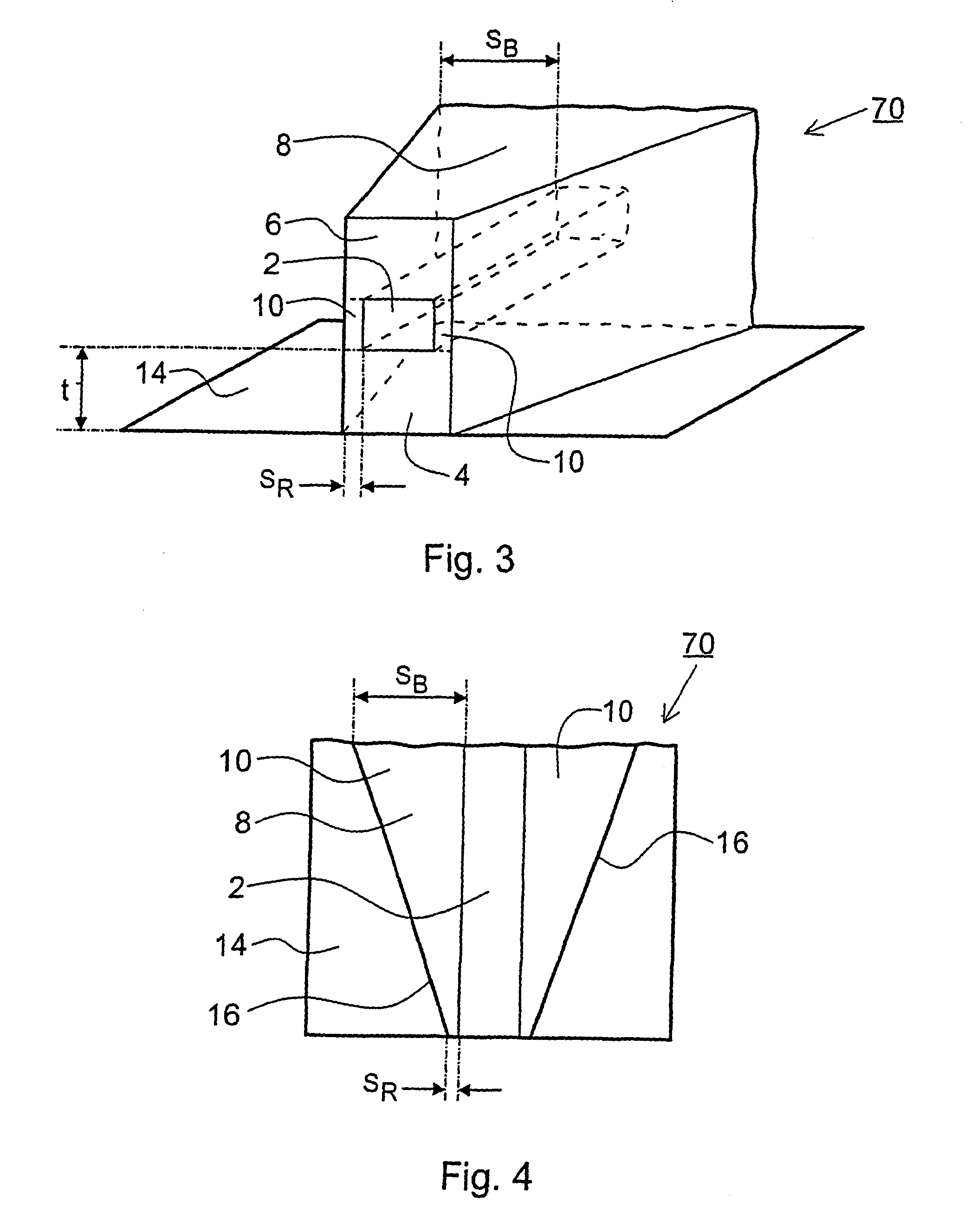Hybrid buried/ridge planar waveguides
a planar waveguide and buried/ridge technology, applied in the field of optical waveguide devices, can solve the problems of increasing the difficulty of forming coupling regions, the conflicting requirements of the different components of the device, and the loss of bending in the ring will be too high, so as to achieve the effect of easy integration of waveguide devices, high device packing densities, and improved device performan
- Summary
- Abstract
- Description
- Claims
- Application Information
AI Technical Summary
Benefits of technology
Problems solved by technology
Method used
Image
Examples
Embodiment Construction
[0049]FIG. 1 is a schematic perspective of a buried waveguide section 50 which forms component part of an optical device of a first embodiment of the invention. In this embodiment the example of a glass waveguide realised by silica on silicon fabrication is taken. The silica is doped with Ge to provide the desired level of refractive index contrast. Other dopants could be used in alternative embodiments. The buried waveguide section comprises a generally rectangular section core 2 extending in a plane beneath an upper surface 8 and surrounded by cladding material built up from an upper cladding layer 6, a lower cladding layer 4 and two lateral cladding layers 10 on either side of the core 2. The silica waveguide structure is arranged on a silicon substrate (not shown). In alternative embodiments, other substrates such as glass (doped or undoped) may be used. The main role of the substrate is to provide mechanical support. In this example of silica on silicon, the physical parameters...
PUM
 Login to View More
Login to View More Abstract
Description
Claims
Application Information
 Login to View More
Login to View More - R&D
- Intellectual Property
- Life Sciences
- Materials
- Tech Scout
- Unparalleled Data Quality
- Higher Quality Content
- 60% Fewer Hallucinations
Browse by: Latest US Patents, China's latest patents, Technical Efficacy Thesaurus, Application Domain, Technology Topic, Popular Technical Reports.
© 2025 PatSnap. All rights reserved.Legal|Privacy policy|Modern Slavery Act Transparency Statement|Sitemap|About US| Contact US: help@patsnap.com



